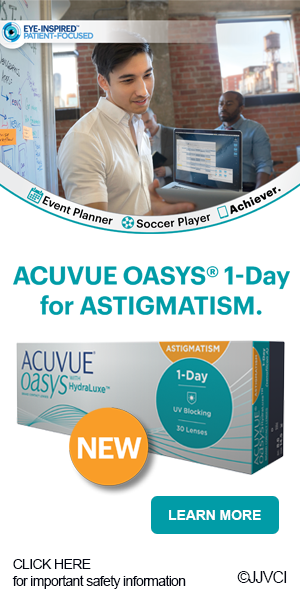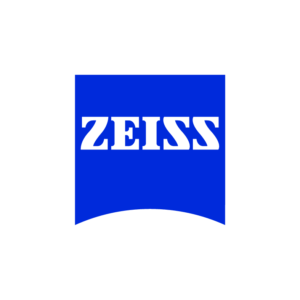A relatively healthy 54-year-old male came into the office for a comprehensive eye examination. All ocular health findings were normal. His chief complaint was disliking that he had to put on reading glasses when he wanted to see things up close. His uncorrected distance visual acuity was OD 20/50–, OS 20/50+, OU 20/40–. The prescription in the glasses that he came in with was OD +1.75 –0.25 x 080, OS +1.75 –0.25 x 090, with a +2.25D add. He currently wears them for anything within arm’s length. For anything farther than that, he removes the glasses and places them in his pocket. He feels that his distance vision is fine, but he knows that it is sharper while he wears his glasses. This patient is a farmer.
An Unmet Need
At the conclusion of the exam, the patient was presented with his options for refractive correction. We make it a point to discuss contact lenses as an option with every candidate, including presbyopes. We educate patients on three characteristics of presbyopia-correcting lenses: 1) Current technologies provide an exceptionally comfortable wearing experience; 2) Contact lenses provide more peripheral vision and also allow wearers to see a computer screen without having to tip their head back (like with progressive addition lenses) to access the near zone of the lenses; and 3) They provide the ability to see both distance and near objects by increasing their depth of focus.
There is a huge unmet need for presbyopes wearing contact lenses when compared to their refractive error needs. The presbyopic population has the highest prevalence of refractive error yet the lowest percentage of patients wearing lenses.
Several daily disposable multifocal lens options are currently available. In addition to specialty soft multifocal toric lenses, newer monthly disposable multifocals that have astigmatism correction are now available as standard offerings in fitting sets. Other options include corneal GPs and sclerals, and hybrid lenses provide GP optics as well but with a GP center and soft skirt. With all of these options, there is good reason to discuss multifocal contact lenses.
Case in Point
With the previous patient, there were concerns with his vision while driving because he felt like he could never get used to glasses. We fit him with a daily disposable multifocal with the following parameters: OD and OS 8.6mm base curve, 14.2mm diameter, +1.75D, high add. His distance vision was OD 20/25, OS 20/25, and OU 20/20. Near vision was OU 20/20. He immediately commented on how comfortable the lenses were on his eyes and how well his distance vision seemed.
He was prescribed a 30-day supply after he successfully demonstrated application and removal of the lenses. He was asked to return for follow up in three to four weeks. During the follow-up visit, he pleasantly described all of the things that he could now see and do that he couldn’t before. Over-refraction with loose lenses was plano for both the right and left eye. The patient’s contact lens prescription was then finalized for a year.
The Verdict
With a massive population of people in the presbyopic age category and a low percentage of them wearing contact lenses, there is a significant unmet need. We embrace these patients and make sure to educate those who are candidates that they can wear them. If neglecting presbyopes is the new norm, we don’t want to be normal.
READ MORE: https://www.clspectrum.com/issues/2020/march-2020/is-this-the-new-norm





